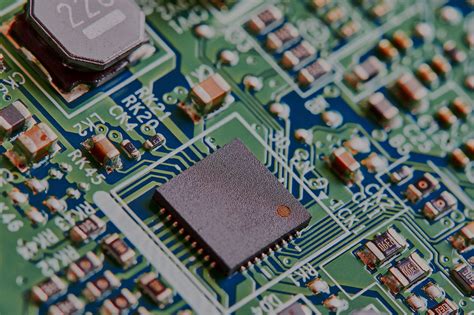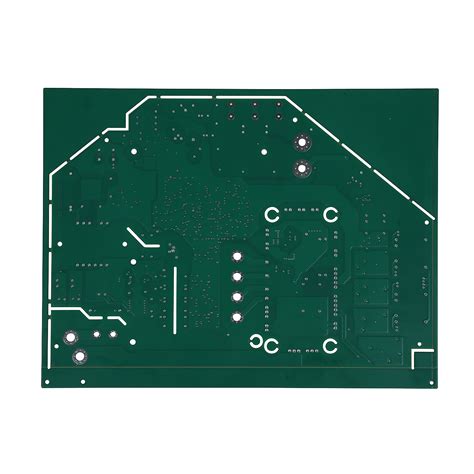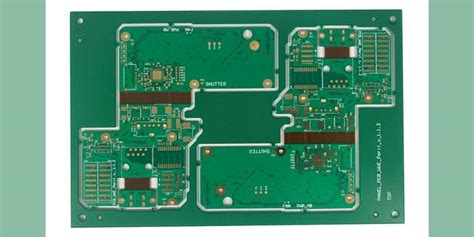Layout pcb online
Designing Efficient PCB Layouts: Tips and Tools for Online Platforms
Designing efficient printed circuit board (PCB) layouts is a critical aspect of modern electronics development, and with the advent of online platforms, this process has become more accessible and streamlined. As technology continues to advance, the demand for compact, reliable, and high-performance electronic devices grows, making the role of PCB design more crucial than ever. Online platforms offer a range of tools and resources that can significantly enhance the efficiency and effectiveness of PCB layout design, providing both novice and experienced designers with the capabilities to create sophisticated circuits.
To begin with, one of the primary advantages of using online platforms for PCB layout design is the accessibility of a wide array of design tools.
These platforms often provide intuitive interfaces that simplify the design process, allowing users to focus on creativity and functionality rather than technical complexities. For instance, many online PCB design tools offer drag-and-drop features, which enable designers to easily place components and route connections. This user-friendly approach not only accelerates the design process but also reduces the likelihood of errors, as designers can visualize their layouts in real-time.
Moreover, online platforms often include extensive libraries of components, which are regularly updated to reflect the latest technological advancements.
This ensures that designers have access to the most current parts and can incorporate cutting-edge technology into their designs. Additionally, these libraries often include detailed specifications and datasheets, providing designers with the necessary information to make informed decisions about component selection. This wealth of resources can significantly enhance the quality and performance of the final PCB layout.
Another significant benefit of using online platforms for PCB layout design is the ability to collaborate with others seamlessly.
Many platforms offer cloud-based services that allow multiple users to work on the same project simultaneously, regardless of their geographical location. This collaborative environment fosters innovation and creativity, as designers can share ideas, provide feedback, and troubleshoot issues in real-time. Furthermore, the ability to collaborate online can lead to more efficient project management, as team members can easily track progress and make necessary adjustments without the need for physical meetings.
In addition to collaboration, online platforms often provide powerful simulation tools that enable designers to test their PCB layouts before moving to the manufacturing stage.
These simulation tools can identify potential issues such as signal interference, thermal management problems, and power distribution inefficiencies. By addressing these issues early in the design process, designers can avoid costly revisions and ensure that the final product meets all performance and reliability standards.
Furthermore, many online PCB design platforms offer integration with manufacturing services, streamlining the transition from design to production.
This integration allows designers to easily export their layouts in the required formats and submit them directly to manufacturers, reducing the time and effort involved in preparing files for production. Additionally, some platforms provide instant quotes and feedback on manufacturability, enabling designers to make cost-effective decisions and optimize their designs for production.
In conclusion, the use of online platforms for PCB layout design offers numerous advantages that can enhance the efficiency and effectiveness of the design process. From user-friendly interfaces and extensive component libraries to collaborative environments and powerful simulation tools, these platforms provide designers with the resources they need to create high-quality, reliable PCBs. As technology continues to evolve, the capabilities of online PCB design platforms are likely to expand, offering even more opportunities for innovation and excellence in electronic design.
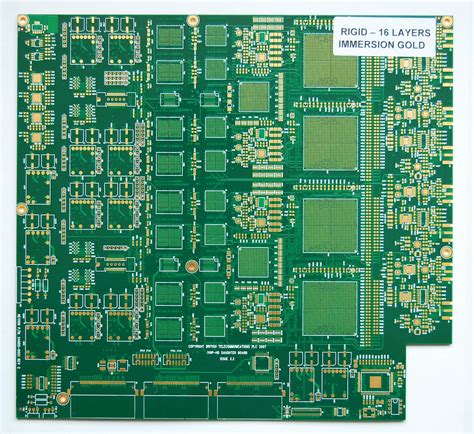
Top Online Resources for Learning PCB Layout Design
Printed Circuit Board (PCB) layout design is a critical skill in the field of electronics, serving as the backbone for the functionality and reliability of electronic devices. As technology continues to advance, the demand for proficient PCB designers has grown, making it essential for aspiring engineers and hobbyists to acquire this skill. Fortunately, the internet offers a plethora of resources that cater to various learning styles and levels of expertise. These online resources provide comprehensive guidance, from foundational concepts to advanced techniques, ensuring that learners can effectively design and implement PCB layouts.
To begin with, online courses are an excellent starting point for those new to PCB layout design.
Platforms such as Coursera and Udemy offer structured courses that cover the basics of PCB design, including schematic capture, component placement, and routing. These courses often include video lectures, quizzes, and hands-on projects, allowing learners to apply theoretical knowledge in practical scenarios. Moreover, many of these courses are taught by industry professionals, providing insights into real-world applications and best practices.
In addition to formal courses, online tutorials and guides are invaluable resources for self-paced learning.
Websites like All About Circuits and Electronics Hub offer detailed articles and step-by-step tutorials on various aspects of PCB design. These resources are particularly useful for individuals who prefer to learn by doing, as they often include downloadable design files and simulation tools. Furthermore, forums and community-driven platforms such as Stack Exchange and Reddit provide opportunities for learners to engage with experienced designers, ask questions, and share knowledge.
For those seeking interactive learning experiences, online PCB design software tools offer a practical approach to mastering layout design.
Tools like Autodesk Eagle, KiCad, and Altium Designer provide free or trial versions that enable users to experiment with different design techniques. These software platforms often include built-in tutorials and extensive documentation, guiding users through the design process from start to finish. By using these tools, learners can gain hands-on experience in creating and testing PCB layouts, enhancing their understanding of design principles and constraints.
Moreover, video content has become an increasingly popular medium for learning PCB layout design.
Platforms such as YouTube host a wide array of channels dedicated to electronics and PCB design, offering video tutorials that range from beginner to advanced levels. Channels like EEVblog and GreatScott! provide engaging content that breaks down complex concepts into easily digestible segments. These videos often include demonstrations of design techniques, troubleshooting tips, and reviews of the latest design tools, making them a valuable resource for visual learners.
Finally, online communities and forums play a crucial role in the learning process by fostering collaboration and knowledge sharing.
Websites like PCBWay and PCB Design Forum offer discussion boards where designers can connect, exchange ideas, and seek advice on specific design challenges. Participating in these communities not only enhances learning but also provides networking opportunities with professionals in the field.
In conclusion, the internet offers a wealth of resources for learning PCB layout design, catering to diverse learning preferences and skill levels. By leveraging online courses, tutorials, design software, video content, and community forums, aspiring PCB designers can develop the expertise needed to excel in this dynamic field. As technology continues to evolve, staying informed and continuously improving one’s skills through these resources will be essential for success in PCB layout design.
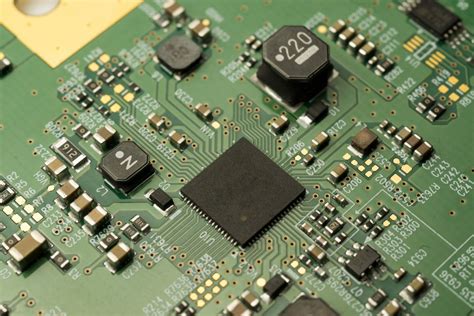
Common Mistakes to Avoid in Online PCB Layout Design
Designing printed circuit boards (PCBs) online has become increasingly accessible, thanks to the proliferation of sophisticated software tools. However, despite the convenience and efficiency these tools offer, there are common pitfalls that designers, especially novices, often encounter. Understanding these mistakes and how to avoid them is crucial for ensuring the functionality and reliability of the final product.
One of the most frequent errors in online PCB layout design is neglecting to adhere to the design rules specified by the manufacturer.
Each manufacturer has unique capabilities and limitations, such as minimum trace width, spacing, and hole size. Failing to comply with these specifications can lead to manufacturing issues, resulting in increased costs and delays. Therefore, it is essential to familiarize oneself with the manufacturer’s guidelines before commencing the design process. This proactive approach not only saves time but also ensures that the design is manufacturable.
Another common mistake is inadequate component placement. Proper component placement is vital for optimizing the performance and reliability of the PCB.
Designers often overlook the importance of placing components in a manner that minimizes trace lengths and reduces electromagnetic interference. To avoid this, it is advisable to group related components together and place them in a logical sequence that follows the signal flow. Additionally, paying attention to thermal management by placing heat-generating components away from sensitive ones can prevent potential overheating issues.
Transitioning to the topic of signal integrity, it is crucial to consider the impact of trace routing on the overall performance of the PCB.
Poor trace routing can lead to signal degradation, crosstalk, and other electrical issues. To mitigate these risks, designers should aim for direct and short trace paths, use differential pairs for high-speed signals, and maintain consistent trace impedance. Furthermore, employing ground planes and proper grounding techniques can significantly enhance signal integrity and reduce noise.
In addition to signal integrity, power distribution is another critical aspect that is often mishandled in online PCB layout design.
Inadequate power distribution can result in voltage drops and insufficient power delivery to components, leading to malfunction. To address this, designers should ensure that power traces are wide enough to handle the required current and that decoupling capacitors are placed close to the power pins of integrated circuits. This practice helps stabilize the power supply and minimizes voltage fluctuations.
Moreover, overlooking the importance of design reviews is a mistake that can have significant repercussions.
Design reviews provide an opportunity to identify and rectify errors before the manufacturing stage. Engaging in peer reviews or utilizing design rule check (DRC) tools can help catch issues that might have been missed during the initial design phase. This step is invaluable in ensuring that the design meets all necessary specifications and functions as intended.
Finally, it is important to consider the impact of design changes on the overall project timeline and budget.
Making last-minute changes can lead to increased costs and extended lead times. Therefore, thorough planning and adherence to the initial design specifications are crucial for avoiding unnecessary revisions.
In conclusion, while online PCB layout design offers numerous advantages, it is not without its challenges. By being aware of common mistakes such as ignoring manufacturer guidelines, improper component placement, poor trace routing, inadequate power distribution, neglecting design reviews, and making hasty design changes, designers can enhance the quality and reliability of their PCBs. Through careful planning and attention to detail, these pitfalls can be effectively avoided, leading to successful and efficient PCB designs.
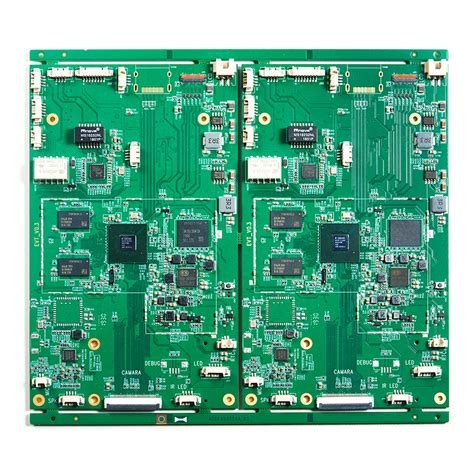
The Future of PCB Layout Design: Innovations in Online Tools
The field of printed circuit board (PCB) design has undergone significant transformations over the past few decades, driven by technological advancements and the increasing demand for more complex electronic devices. As we look to the future, one of the most promising developments in this domain is the emergence of online tools for PCB layout design. These tools are revolutionizing the way engineers and designers approach the creation of PCBs, offering a range of benefits that traditional software solutions struggle to match.
To begin with, online PCB layout tools provide unparalleled accessibility.
Unlike traditional software that requires installation on specific hardware, online tools can be accessed from any device with an internet connection. This flexibility allows designers to work from virtually anywhere, facilitating collaboration across different geographical locations. As a result, teams can seamlessly integrate their efforts, leading to more efficient design processes and faster project completion times.
Moreover, online PCB design platforms often incorporate cloud-based storage solutions, which offer significant advantages in terms of data management and security.
By storing design files in the cloud, users can ensure that their work is automatically backed up and protected against data loss. This feature is particularly beneficial in collaborative environments, where multiple team members need access to the latest version of a design. Additionally, cloud storage allows for easy version control, enabling designers to track changes and revert to previous iterations if necessary.
Another key innovation in online PCB layout tools is the integration of advanced simulation and testing features.
These capabilities allow designers to validate their designs in a virtual environment before moving to the manufacturing stage. By simulating the electrical performance of a PCB, designers can identify potential issues and make necessary adjustments early in the design process. This proactive approach not only reduces the risk of costly errors but also enhances the overall quality and reliability of the final product.
Furthermore, the user-friendly interfaces of many online PCB design tools make them accessible to a broader audience, including those who may not have extensive experience in electronics design. Intuitive drag-and-drop functionalities, along with comprehensive libraries of components, enable users to quickly and easily create complex layouts. This democratization of PCB design empowers hobbyists, startups, and small businesses to innovate and bring their ideas to life without the need for significant investment in specialized software or training.
In addition to these benefits, online PCB layout tools are continually evolving to incorporate the latest technological advancements.
For instance, some platforms are beginning to leverage artificial intelligence and machine learning algorithms to optimize design processes. These technologies can analyze vast amounts of data to provide designers with insights and recommendations, helping them make informed decisions and improve the efficiency of their workflows.
As we look to the future, it is clear that online PCB layout tools will play an increasingly important role in the electronics industry. By offering accessibility, collaboration, advanced simulation capabilities, and user-friendly interfaces, these tools are poised to transform the way PCBs are designed and manufactured. As technology continues to advance, we can expect even more innovative features to emerge, further enhancing the capabilities of online PCB design platforms and driving the industry forward. In this rapidly evolving landscape, staying abreast of these developments will be crucial for designers and engineers seeking to remain competitive and deliver cutting-edge solutions.

